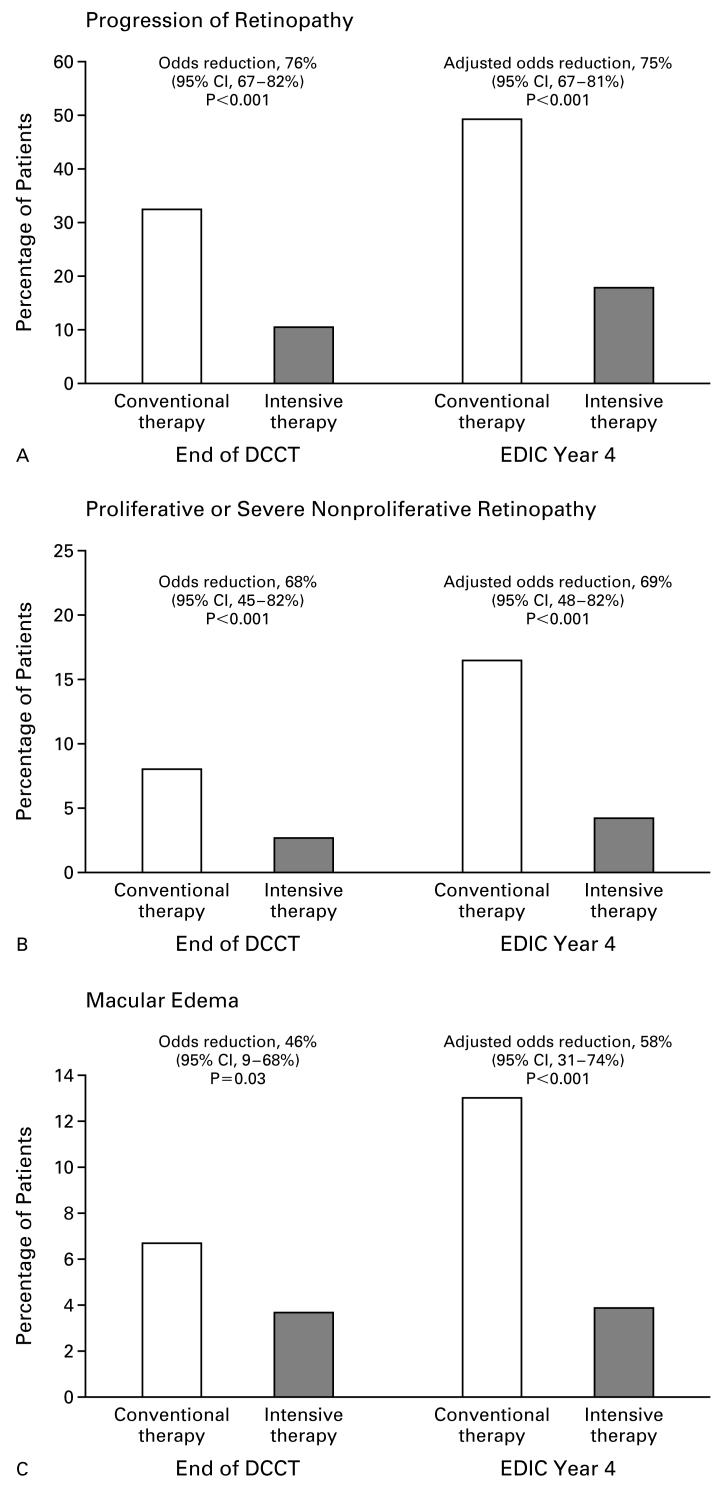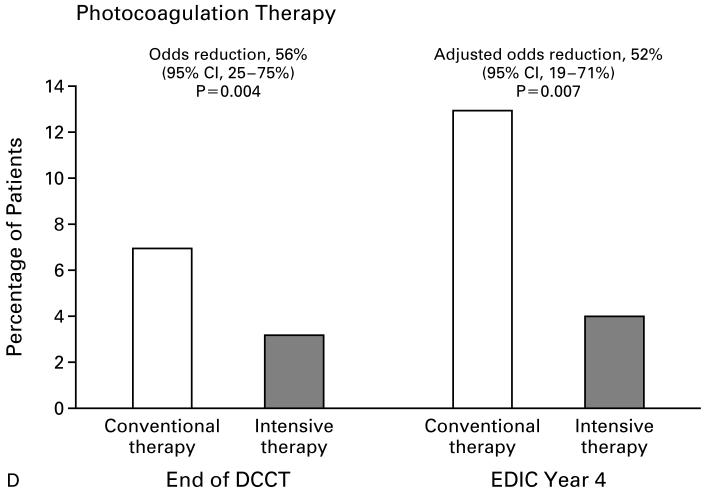Figure 2.
Prevalence of More Severe Retinopathy as Compared with the Level of Retinopathy at Entry into the Diabetes Control and Complications Trial (DCCT), at the End of the DCCT, and after an Additional Four Years of Follow-up in the Epidemiology of Diabetes Interventions and Complications (EDIC) Study among 1208 Patients Evaluated at Year 4 of the EDIC Study.
There were 603 patients in the conventional-therapy group and 605 in the intensive-therapy group. Patients who underwent scatter photocoagulation after entry into the DCCT were counted as having worsening retinopathy, and those who underwent focal photocoagulation were counted as having macular edema. Adjusted odds ratios were computed after stratification according to the level of retinopathy at the end of the DCCT, as shown in Table 1. The percent reduction in the likelihood of worsening retinopathy was computed as (1-OR)×100, where OR is the odds ratio for intensive therapy as compared with conventional therapy. Panel A shows the percentage of subjects with progression of retinopathy (three or more steps) after DCCT entry. Panel B shows the percentage of patients with development of proliferative or severe nonproliferative retinopathy. Panel C shows the percentage of patients with clinically significant macular edema. Panel D shows the percentage of patients who underwent photocoagulation (scatter or focal).


